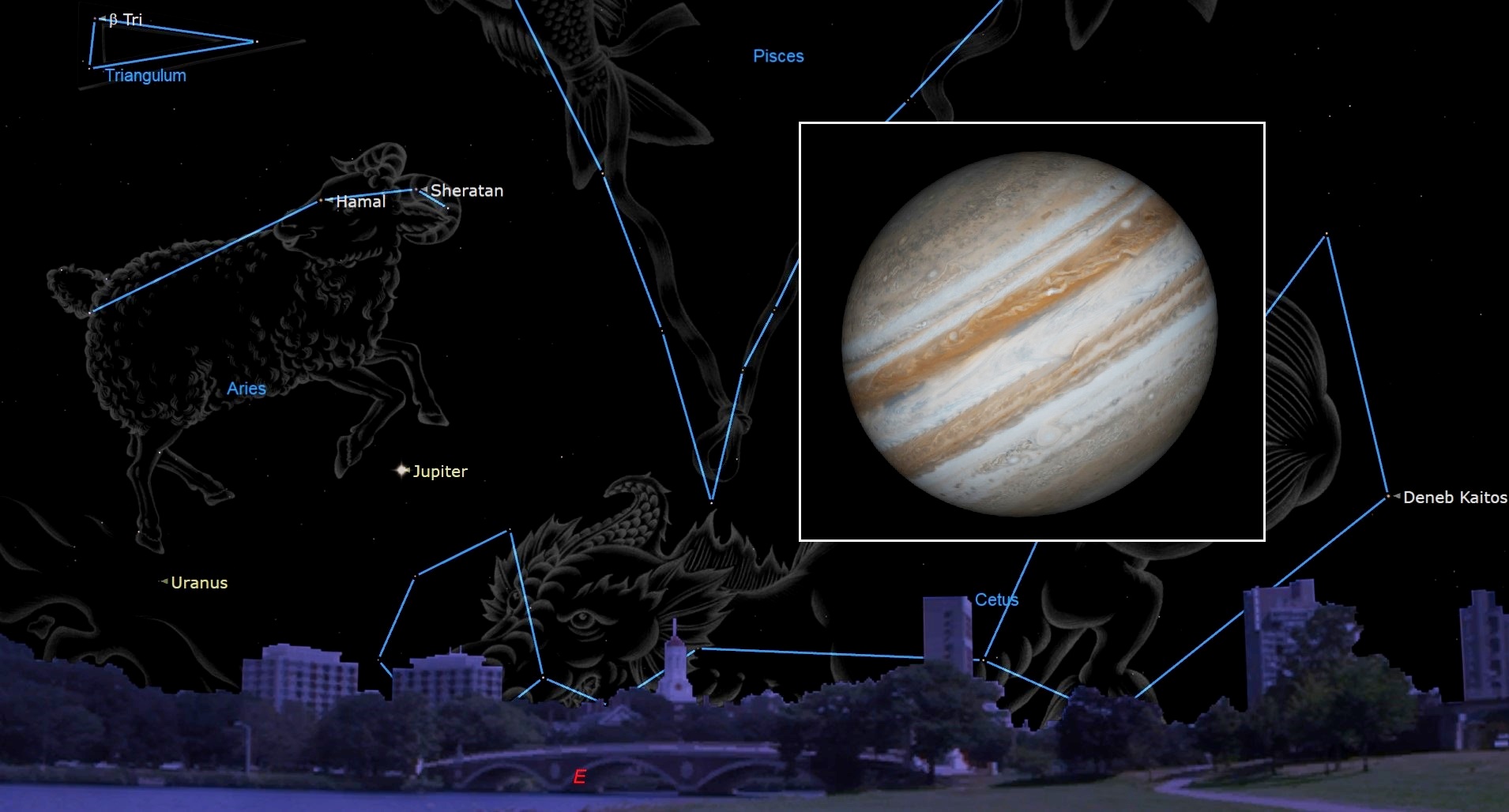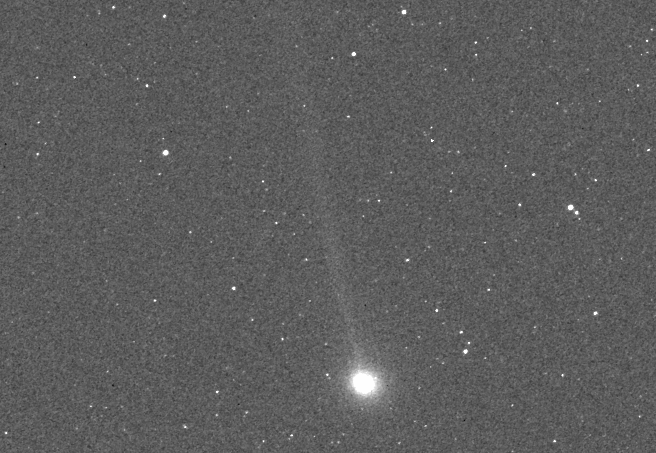
Friday night is a great night to get comfortable and watch the night sky.
One of the best sights of the season, Jupiter, will be bright and prominent in the eastern skies starting right at sunset. Jupiter reached opposition just after midnight on Friday (Nov. 3), meaning it lies directly opposite the sun as seen from Earth, making the gas giant slightly brighter than usual.
Below and to the left of Jupiter will be Uranus, which will be far dimmer and require a strong telescope and patience to locate and observe. Farther to the left will be the "Seven Sisters" of the Pleaides star cluster, one of the most popular sights in the night sky. And flanking all of these will be the radiant (apparent origin) points of the Northern and Southern Taurid meteor showers, respectively. Both of these showers are approaching their peak, so this is a great night for skywatching no matter what your favorite targets might be.
By around 10 p.m. EDT Friday night (0200 GMT on Nov. 4), all of these targets should be fairly high in the sky in the east. Jupiter will be unmistakable as a large, bright, pale-yellow orb.
Related: Night sky, November 2023: What you can see tonight [maps]

Want to see the four largest moons of Jupiter? We recommend the Celestron Astro Fi 102 as the top pick in our best beginner's telescope guide.
Jupiter will be just below the Aries constellation, the Ram; use the planet to find the three stars that make up the curve of the horn of the "ram:" Hamal, Sheratan and Mesarthim. The planet should reach its highest point in the sky right around midnight local time. Through a telescope or even binoculars, you should be able to make out some of its four largest satellites, known as its Galilean moons.
Look to the lower left of Jupiter to find the Pleaides, also known as the Seven Sisters. This star cluster, also referred to as Messier 45 or M45, is a group of more than 1,000 stars no more than 150 million years old. While the cluster's six or seven brightest stars are visible in most moderately dark skies, using binoculars or a small telescope will reveal many more.
If you're lucky, you might catch sight of a Taurid meteor streaking through the sky while taking in these popular night sky sights. The Southern Taurids peak between Nov. 4 and Nov. 5, and the Northern Taurids peak between Nov. 11 and Nov. 12.
The Taurid meteor showers occur each year as Earth passes through debris left behind by comet 2P/Encke, a small comet measuring just 2.98 miles (4.8 kilometers) across.
Encke has the shortest orbital period of any comet in our solar system, taking just 3.3 years to orbit the sun. Small bits of dust and rock are left behind as the comet orbits our star, spreading out across a distance large enough that Earth experiences two distinct peaks — the Northern Taurids and the Southern Taurids.

To see a meteor, find a dark spot as far from light pollution as you can, bundle up, get comfortable and watch the night sky carefully in the area surrounding Jupiter. The Taurids aren't known to be super productive (averaging around five meteors per hour), but they do tend to produce extra-bright meteors known as fireballs.
If you are hoping to catch a look at Jupiter, the Pleaides or anything else in the crisp autumn skies, our guides to the best telescopes, the best budget telescopes and the best binoculars are a great resource to get you started with some high-quality optics no matter what your budget.
And if you want to take photos of anything in the sky, check out our guides on how to photograph the planets or how to photograph meteors, as well as our best cameras for astrophotography and best lenses for astrophotography.
Editor's Note: If you snap an image of Jupiter at opposition and would like to share it with Space.com’s readers, send your photo(s), comments, and your name and location to spacephotos@space.com.







